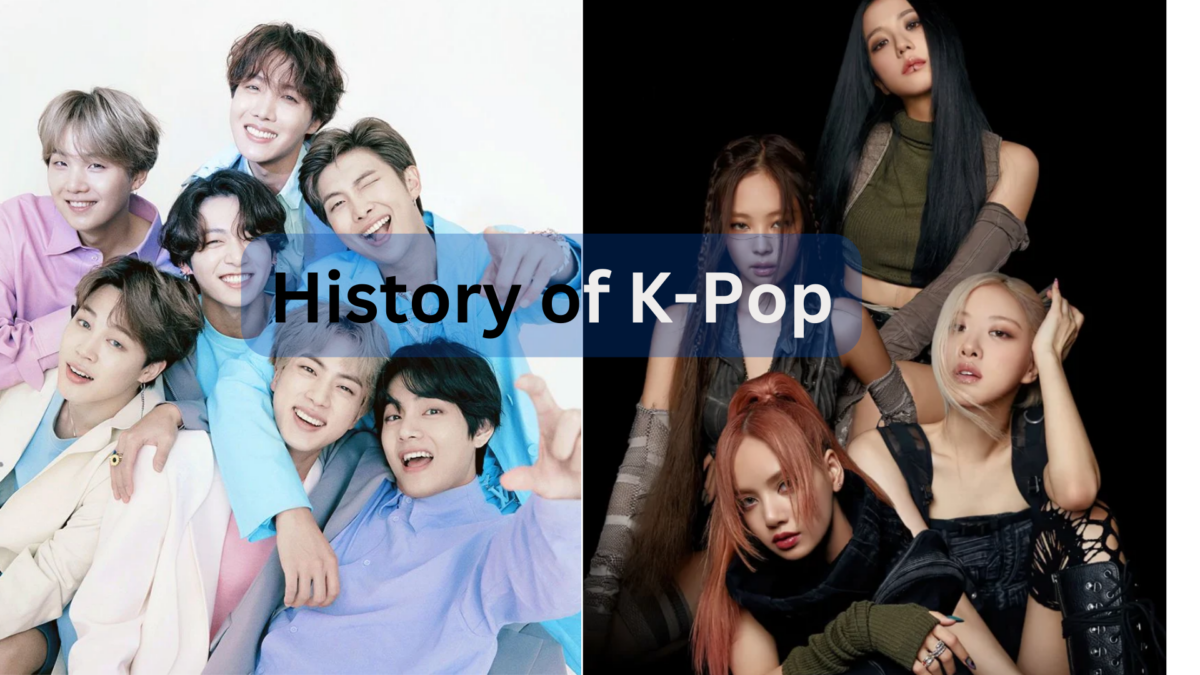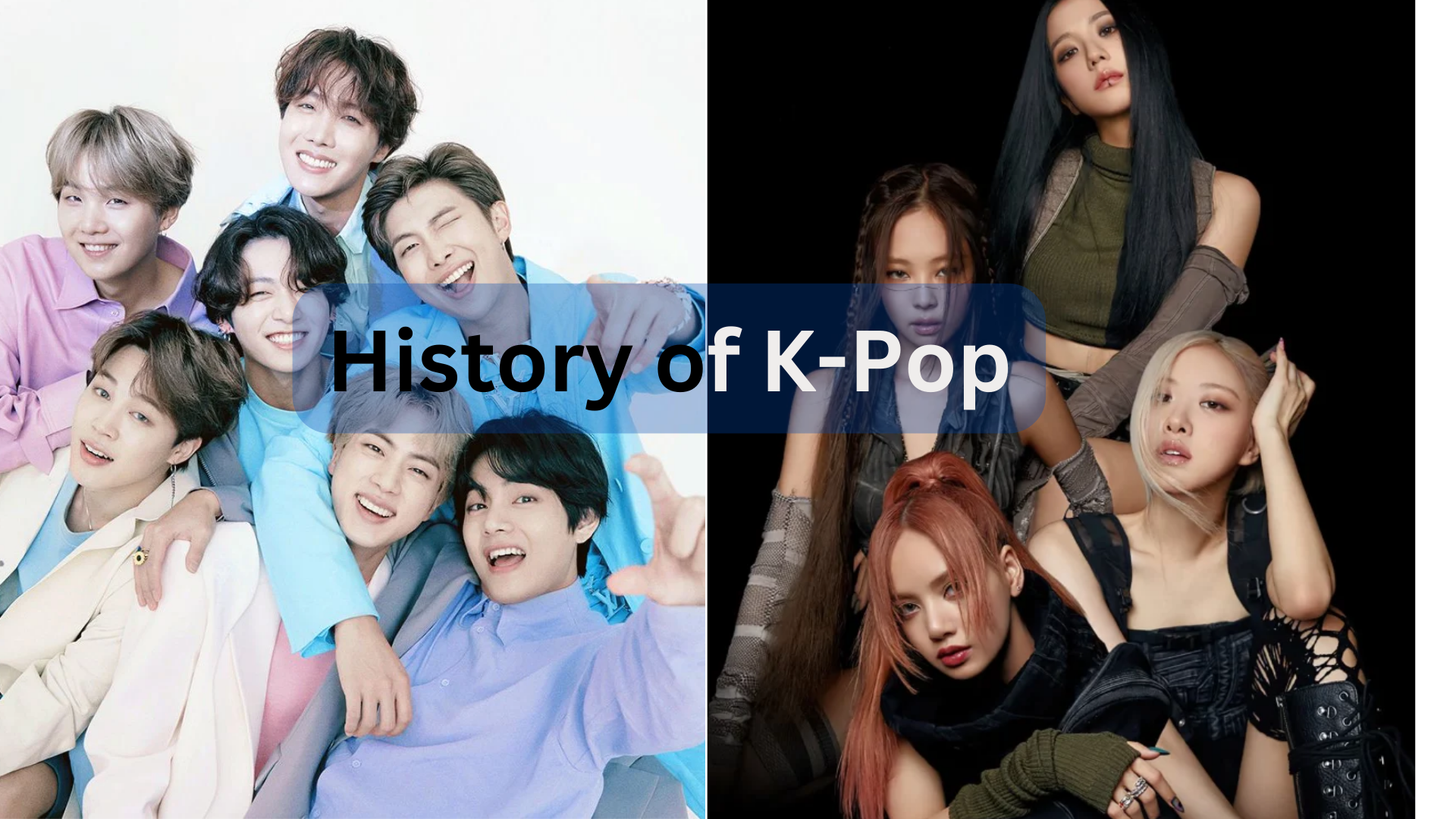Let us explore, the history and the rise of K-pop in this article.

In the bustling streets of Seoul, something truly amazing was happening. It was the birth of K-pop, a music genre that would soon take over the world, one catchy song at a time.
The story of K-pop is all about never giving up, trying new things, and being super creative. It started in the early 1990s, when South Korea was getting stronger after some tough times. The country was getting more connected to the world, and its music was changing too. They mixed Korean traditions with pop music from other countries, and that’s how K-pop was born!
In the late ’90s, cool groups like H.O.T and Seo Taiji and Boys started the K-pop journey. They had cool songs and wore fancy clothes that everyone loved. But it was in the early 2000s when K-pop really started to shine. The internet and social media helped singers like BoA and TVXQ become famous everywhere. They had awesome dance moves, cool videos, and songs you just couldn’t forget.
Now, in today’s world, K-pop is super popular worldwide. Bands like BTS, BLACKPINK, and EXO are not only making hit songs but also making people from different countries feel happy with their music. K-pop shows us that when you mix tradition with innovation, amazing things can happen, and it’s a story that keeps on going!
The Beginning of K-Pop
In the early 1990s, something really cool happened in South Korea. It was the birth of K-pop, and it all started with an electrifying hip-hop performance in 1992.
But K-pop wouldn’t be what it is today without a few key ingredients: democracy and television. You see, before 1987, South Korea had only two TV networks, and they pretty much controlled what music people got to hear. Singers and musicians were like puppets in their hands.
They introduced new musical stars mostly through weekend talent shows on TV. Radio was there too, but just like TV, it was tightly controlled by the government. Independent music production was almost nonexistent, and rock music was a big no-no, sometimes even banned.
Then came the big change in 1987 when South Korea reformed its government and embraced democracy. This brought about a modernization wave and loosened up the rules on what could be shown on TV. Suddenly, there was more room for creativity and diversity.
Before this change, the music you’d hear on TV was mostly slow ballads or a genre called “trot,” which mixed traditional music with old pop songs. But after 1987, things started to shake up. Radio began to grow, and South Koreans got to listen to a wider range of music, including contemporary American tunes.
So, that electrifying hip-hop performance in 1992 was like a spark in a powder keg. It was the beginning of a new era in music, one that would become the global sensation we now know as K-pop. It’s a story of how democracy and TV helped unleash the creative forces of South Korea, giving birth to a musical phenomenon that would capture hearts all over the world.
Timeline of Rise in K-Pop
Have you heard of Hallyu, the Korean wave? It’s the idea that South Korean pop culture has become a big part of our global world. From binge-watching Korean dramas on Netflix to trying out those amazing Korean skincare routines and savoring delicious Korean tacos at your favourite local eatery, it’s everywhere. And at the heart of this cultural phenomenon is the ever-growing popularity of K-pop.
Korean pop and idol culture may seem like something new, but it have a fascinating history. It all began in the 1950s with The Kim Sisters, a trio from Korea who didn’t speak English but won fame in the U.S. by singing American pop songs phonetically, putting their hearts into it.
In the 1970s, folk-rock singer Kim Min-ki created a powerful song called “Morning Dew.” This song became an anthem for the youth pro-democracy movement during a time of political turmoil, showing how music can be a voice for change.
Now, let’s jump to the 1990s. This is when Seo Taiji and Boys made their mark, revolutionizing Korean Pop music. They mixed Korean and American music, added hip-hop dance moves, and voila – K-pop was born. They were the first-ever K-pop group, and they set the stage for what was to come.
As the recipe for K-pop stardom (genre-blending music, stunning performers, flawless looks, and intricate dances) became clear, the first generation of K-pop stars emerged. H.O.T was one of the earliest K-pop idol groups, crafted and trained to perfection.
The second generation of K-pop kicked off with G.O.D, following the same formula. They became huge in the early 2000s, followed by TVXQ, Super Junior, BIGBANG, and F.T. ISLAND.
Today, we’re in the era of third-generation K-pop groups, like BTS, EXO, Seventeen, and BLACKPINK. They’ve taken the music world by storm, even cracking the American mainstream, which is traditionally dominated by a white-centric culture.
Thanks to the power of social media, these K-pop groups have found their way into hearts all around the globe, proving that music and culture know no boundaries. Platforms like TikTok and Instagram have become gateways for sharing niche culture globally, changing the game for entertainment worldwide.
Read More:
WHAT IS THE BURNING MAN FESTIVAL? WHERE IS IT HELD IN 2023?
WHO IS LENI OLUMI KLUM? HOW IS SHE RELATED TO SEAL?
IS BEYONCE PREGNANT IN 2023? HOW MANY CHILDREN DOES SHE HAVE?

